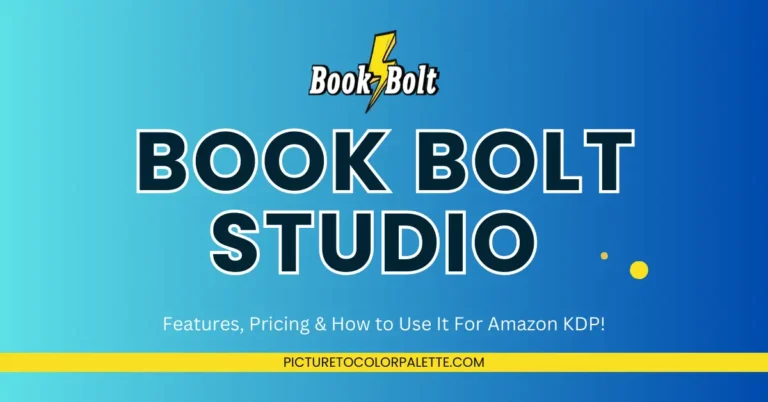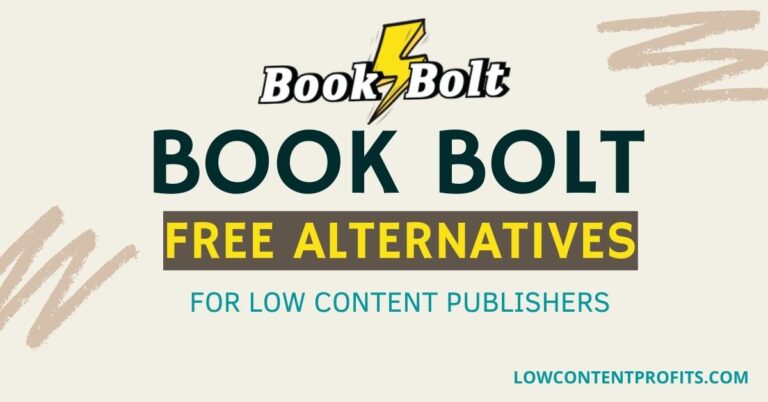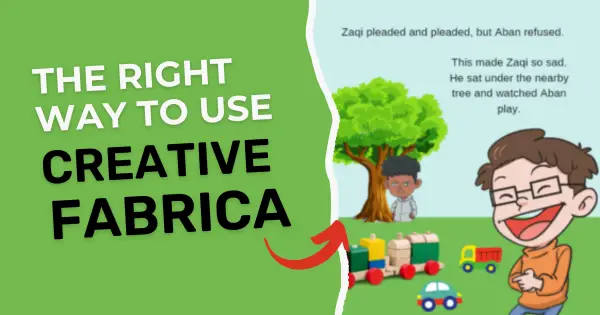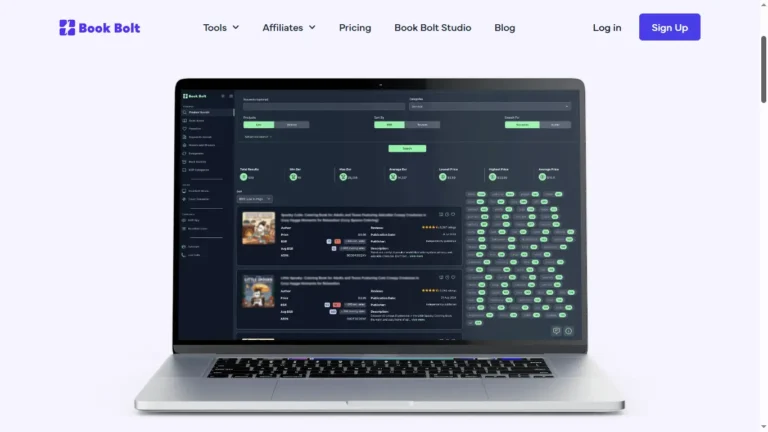Can I Make a Small Book on KDP? A Beginner’s Guide to Publishing Short Books on Amazon
Last updated on July 22nd, 2025 at 06:16 pm
If you’ve ever wondered, “Can I publish a small book on KDP?” The short answer is a resounding yes!
Amazon Kindle Direct Publishing (KDP) makes it possible to publish books of various sizes, including shorter ones like journals, guides, or novellas.
Whether you’re a seasoned author or a beginner testing the waters, creating a small book can be a smart and manageable way to break into the publishing world.
Why Publish a Small Book on KDP?
Short books offer several advantages:
- Lower Production Time: Short books take less time to write, design, and format, making them perfect for authors with tight schedules.
- Target Specific Audiences: Small books are ideal for addressing niche topics or creating focused content, such as guides, workbooks, or poetry collections.
- Cost-Effective: They’re often cheaper to produce, making them a great starting point for new authors or a profitable addition to an experienced author’s portfolio.
In this blog post, we’ll explore:
- What is considered a small book on KDP (and Amazon’s specific requirements).
- The benefits of publishing small books.
- Types of small books that perform well.
- Tips on formatting, pricing, and marketing your small book for maximum success.
Let’s dive in and see how small books can make a big impact on your publishing journey!

🎁 Download 15 FREE KDP Interior Templates
Save time and create beautiful low-content books faster with these 15 ready-to-use KDP interiors — completely free! Perfect for journals, planners, and activity books.
What Is Considered a Small Book on KDP?
Publishing a small book on Kindle Direct Publishing (KDP) is not only possible but also practical for many niches, such as journals, short guides, or children’s books. Here’s how KDP defines a “small book” based on various factors:
Trim Size
Trim size refers to the physical dimensions of a book. KDP supports various trim sizes, and the smallest possible size for a paperback is 5″ x 8″ (12.7 x 20.32 cm). This compact size is ideal for short books like pocket guides, planners, or poetry collections. Other popular small trim sizes include:
- 6″ x 9″ (15.24 x 22.86 cm): Common for journals and guides.
- 5.5″ x 8.5″ (13.97 x 21.59 cm): Suitable for shorter fiction or manuals.
Page Count
The minimum page count for a paperback book on KDP is 24 pages. This is the absolute lowest threshold for creating a physical book that meets Amazon’s printing standards. For eBooks, there’s no strict page count limit, but shorter eBooks are typically categorized as novellas, short stories, or pamphlets.
Word Count
While KDP doesn’t specify a word count requirement, the word count naturally correlates with the page count. Here are some general guidelines for small books:
- Short stories: 5,000–15,000 words.
- Guides or how-to books: 3,000–10,000 words.
- Journals or planners: Minimal text; these rely more on formatting and design.
- Children’s books: 500–2,000 words, often with illustrations taking up significant space.
Amazon’s Minimum Requirements for Publishing
To successfully publish a small book on KDP, you need to meet the following minimum requirements:
Page Count
At least 24 pages for paperback books. If you want to publish your small book as a paperback book then it should have 24 pages at least including title page, table of contents and main content pages.
Cover Design
Must meet KDP’s specifications for trim size, bleed, and resolution (at least 300 dpi).
Manuscript Formatting
Properly formatted for the chosen trim size and free of significant errors. Make sure your book manuscript has a consistent layout with paragraphs, headings and subheadings.
Book Pricing
The book must meet KDP’s minimum pricing thresholds, which vary based on page count and printing costs.
By understanding these specifications, you can effectively plan and create a small book tailored to your niche, ensuring it meets Amazon’s guidelines while appealing to your target audience.
Related Post: Check out My KDP Earnings from 9 math workbooks that I earned in 90 Days!
Benefits of Publishing Small Books on KDP

Publishing small books on Kindle Direct Publishing (KDP) comes with several advantages, making them a popular choice for authors, self-publishers, and niche creators. Here’s a closer look at why creating small books can be a smart strategy:
1. Faster to Create and Publish
Small books typically require less time to write, format, and design. This allows authors to:
- Publish more frequently and experiment with different topics or formats.
- Test market viability with minimal upfront investment.
- Build a portfolio of books quickly, increasing their visibility on Amazon.
For example, creating a 50-page math workbook or a short guide can take weeks instead of months, accelerating your publishing schedule.
2. Cost-Effective for Writers and Illustrators
Shorter books require fewer resources, making them a cost-effective option:
- For Writers: Writing and editing costs are lower since there’s less content to produce.
- For Illustrators: Fewer pages mean reduced illustration or design costs, especially for children’s books or illustrated guides.
- For Print-On-Demand (POD): KDP’s POD model ensures you only pay for printing when a book is sold, keeping upfront costs minimal.
This affordability allows creators to enter the publishing market without significant financial risk.
3. Appeal to Niche Markets
Small books excel in targeting niche audiences that value concise, focused content. Examples include:
- Journals and Planners: Customizable formats for specific hobbies or goals.
- Guides and How-To Books: Short, actionable advice for targeted problems (e.g., “Beginner’s Guide to Knitting”).
- Workbooks and Activity Books: For students, professionals, or hobbyists needing quick exercises or activities.
Niche books often face less competition and attract loyal buyers who appreciate their specificity.
4. Less Intimidating for Beginner Authors
For first-time authors, the thought of writing a full-length novel or comprehensive guide can be overwhelming. Publishing a small book offers:
- A manageable starting point to gain experience with the KDP platform.
- A chance to learn about the publishing process without investing months in content creation.
- Opportunities to gather feedback from readers and improve with future books.
Starting small allows authors to build confidence and gradually scale up to larger projects.
Small books on KDP are not just practical; they’re strategic. Whether you’re a beginner looking to test the waters or an experienced creator targeting a specific niche, small books offer a fast, cost-effective, and impactful way to establish your presence on Amazon.
Related Post: How I Made $990 Selling 6 Medium Content Books On KDP!
Types of Small Books That Perform Well on KDP
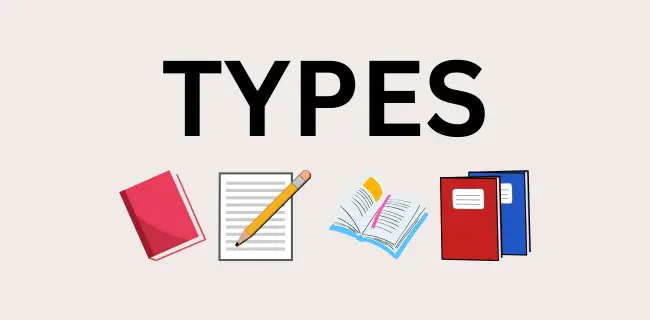
Small books can be highly successful on Kindle Direct Publishing (KDP), especially when tailored to specific audiences and purposes. Below are some popular types of small books that consistently perform well on Amazon:
1. Journals, Planners, and Workbooks
These low-content or medium-content books are in high demand:
- Journals: Gratitude journals, fitness trackers, or writing prompts.
- Planners: Daily, weekly, or goal-oriented planners for personal or professional use.
- Workbooks: Study guides, math workbooks, puzzle books, activity books, or practice sheets for various subjects.
Why They Work:
- Highly customizable for niche markets.
- Low creation costs; often focus on layout and design rather than extensive writing.
- Serve practical purposes, making them appealing for repeat purchases.
2. Short Story Collections or Novellas
Fiction writers can succeed with shorter works such as:
- Standalone novellas in popular genres like romance, thriller, or sci-fi.
- Themed short story collections targeting specific audiences.
Why They Work:
- Easier for busy readers to finish in one sitting.
- Lower word count reduces production time for authors.
- Often serve as a lead magnet to draw readers into longer series.
3. Niche-Specific Guides and How-To Books
These non-fiction small books target focused audiences with actionable advice:
- “How to Start Gardening in Small Spaces.”
- “A Beginner’s Guide to Freelance Writing.”
- “Quick Keto Recipes for Busy People.”
Why They Work:
- Cater to specific pain points or interests.
- Short, actionable, and to the point, which readers appreciate.
- Great for building authority in a niche or driving traffic to related content like blogs or courses.
4. Children’s Picture Books
Designed for young readers, these books combine short, engaging text with vibrant illustrations:
- Stories with moral lessons.
- Alphabet or number learning books.
- Simple bedtime stories.
Why They Work:
- Parents and educators are always searching for educational and entertaining content.
- Short page counts and visual focus make them perfect for smaller formats.
- Opportunity to create a series that grows with a child’s development.
Publishing small books on KDP allows creators to leverage niche markets, build their author brand, and cater to specific reader needs. Each of these types has proven demand and offers opportunities to succeed with well-crafted content and strategic marketing.
How to Format and Design a Small Book for KDP
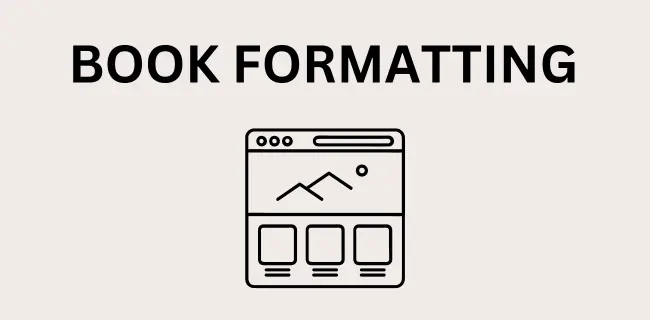
Formatting and designing a small book for Kindle Direct Publishing (KDP) are critical steps that ensure your book meets Amazon’s standards and appeals to potential buyers. Here’s a guide to get it right:
1. Manuscript Tips
Formatting your manuscript correctly is essential for a polished, professional look.
Choose the Right Tools:
- MS Word: Ideal for straightforward text-based books like guides and journals.
- Scrivener: Great for organizing and formatting complex projects, like novellas or short story collections.
- Canva: Perfect for creating visually rich interiors for workbooks, planners, or children’s books.
Set Proper Margins and Trim Sizes:
Use KDP’s recommended trim sizes (e.g., 6″ x 9″, 5″ x 8″).
- Ensure margins allow for printing and binding:
- Standard Margins: 0.25 inches on all sides.
- Gutter Margins: Add extra space on the inner edge for thicker books.
- Download and follow KDP’s print-ready templates for accuracy.
File Format:
- Save your manuscript as a PDF to preserve formatting.
- Ensure fonts are embedded in the file to avoid issues during the upload process.
2. Cover Design
Your cover is the first thing readers notice, so it must grab attention while meeting KDP’s technical requirements.
Create an Eye-Catching Design:
- Use bold, legible fonts and vibrant colors that stand out in thumbnails.
- Keep the design genre-appropriate (e.g., fun and colorful for children’s books, minimalist for journals).
Understand KDP Specs:
- The cover must include front, back, and spine in a single PDF file for print books.
- Resolution: At least 300 dpi for crisp, professional-quality images.
- Bleed: Ensure designs extend beyond the trim size by 0.125 inches to avoid white edges.
Recommended Tools:
- Affinity Designer: Offers professional-grade tools for creating high-quality book covers.
- Canva: User-friendly for beginners; provides pre-designed templates you can customize for KDP.
- KDP Cover Creator: Built into the platform, helpful for quick and simple designs.
Test Your Book Cover
- Use KDP’s preview tool to check how your cover looks in print and as a digital thumbnail.
- Ensure text and images align correctly and are easy to read.
Formatting and designing a small book for KDP requires attention to detail and adherence to Amazon’s specifications. By using the right tools and following these guidelines, you can create a visually appealing and professional-quality book that stands out on the platform.
👉 Want to create kdp low content books fast? I have shared a step-by-step process of creating and publishing a kdp journal in under 60 minutes, you can read it here.
Pricing Strategies for Small Books
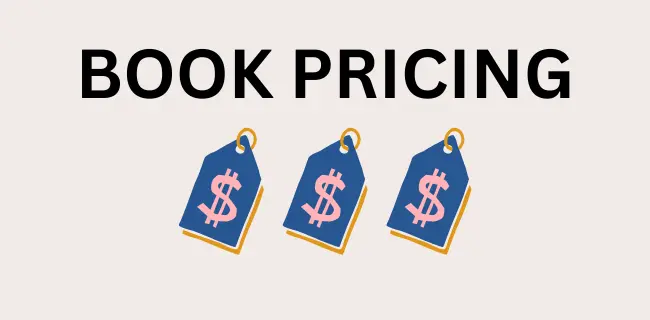
Pricing plays a key role in the success of your small book on KDP. Setting the right price can attract more buyers while maximizing your royalties. Here’s a guide to effective pricing strategies:
Overview of KDP Pricing Rules
- Minimum Price: KDP sets a minimum price for print books based on page count and printing costs. For short books (e.g., 24-50 pages), the minimum price typically starts around $3.50 to $5.00.
- Royalty Options:
- 70% Royalty: Available for eBooks priced between $2.99 and $9.99.
- 35% Royalty: Applicable for eBooks priced below $2.99 or above $9.99.
- Printing Costs: For paperbacks, the final price must cover the base printing cost, which varies by trim size, page count, and color options.
Recommendations for Competitive Pricing for Short Books
Research Competitors:
- Look at similar books in your niche. Identify pricing trends for journals, guides, or short stories.
- Example: A 50-page planner might be priced at $6.99, while a 40-page short guide might be $3.99.
Consider Value Perceived by Readers:
- Non-fiction guides with actionable advice often justify higher prices ($4.99–$7.99).
- Low-content books like journals or planners may perform well in the $5.99–$8.99 range.
Test and Adjust:
- Start with a mid-range price, then monitor sales and reviews. Adjust pricing to maximize conversions without sacrificing profits.
Examples of Successful Small Book Pricing on Amazon
- Gratitude Journal: $6.99–$8.99 for a 100-page book.
- Short How-To Guide: $3.99–$5.99 for 30-50 pages.
- Children’s Picture Book: $7.99–$9.99 for colorful illustrations and 24-32 pages.
These examples highlight the balance between perceived value and affordability, essential for driving sales.
Marketing Tips for Small Books
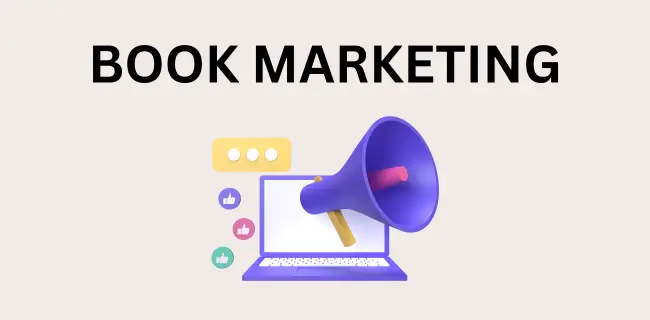
Effective marketing ensures your small book reaches the right audience and generates consistent sales. Here are strategies to amplify its visibility:
1. Using Keywords to Target Niche Audiences
- Conduct thorough keyword research using tools like Titans Pro or BookBolt.
- Focus on long-tail keywords that cater to specific interests (e.g., “daily mindfulness journal for beginners” or “5th-grade multiplication workbook”).
- Include primary keywords in your book title, subtitle, and product description for improved discoverability.
✨I have written a detailed post about Titans Pro, a brand-new kdp tool that makes finding kdp niches and keywords fast and easy. You can read the blog post here.
2. Leverage Amazon Ads for Better Visibility
- Use Sponsored Product Ads to target specific keywords and categories.
- Set a manageable daily budget (e.g., $5–$10) to test ad performance.
- Monitor click-through rates (CTR) and conversion rates to optimize your campaigns.
3. Promote Through Blogs, Social Media, or Email Marketing
- Blogs: Write articles related to your book’s topic and include links to your Amazon listing.
- Social Media: Share engaging posts, including behind-the-scenes content or testimonials. Platforms like Instagram and Pinterest work well for visually appealing books like journals or planners.
- Email Marketing: Offer your book as a solution to your subscribers’ needs. For example, “Get organized this year with my easy-to-use daily planner!”
4. Bundle with Other Related Books or Products to Increase Value
- Combine your small book with other offerings, such as:
- A free PDF workbook for readers who purchase your guide.
- Discounts on a series of journals or planners.
- An upsell of digital products like templates or additional resources.
- Bundling adds perceived value, encourages repeat purchases, and increases customer loyalty.
By combining thoughtful pricing strategies with targeted marketing efforts, you can ensure your small book not only reaches the right audience but also thrives in a competitive market.
Conclusion!
Publishing a small book on KDP is not only feasible but also a strategic way to enter the self-publishing world. Whether you’re a beginner or an experienced author, small books are faster to create, cost-effective, and cater to specific niches that can bring steady sales.
By starting with a manageable project, experimenting with formats and marketing strategies, and refining based on audience feedback, you can build a strong foundation for success on Amazon KDP.
Remember, the key is to take that first step – whether it’s a short guide, a creative journal, or a children’s book. Your readers are waiting for your ideas to come to life!
If you’ve already published a small book or are considering it, share your experiences or ask questions in the comments below. Let’s learn and grow together!
What Next?
Download Your Free KDP Template Bundle: Start your small book publishing journey with our free, ready-to-use KDP templates! Get your free templates here.
Explore More KDP Tips: Check out my other blog posts or watch my YouTube videos for actionable advice on KDP formatting, marketing, and keyword research.
Boost Your Keyword Strategy: Ready to dive into keyword research? Try BookBolt to uncover profitable niches and optimize your listings.
👉 Book Bolt: https://bit.ly/Book_Bolt (20% Off Coupon Code: subha20)
Your small book could be the next big hit—start creating today!
Join The Digital Income Flow Community
The Digital Income Flow is an exclusive community for creators who want to build multiple streams of digital income through self-publishing, affiliate marketing, and digital products.
So far, 57 founding members have joined and Full KDP Course is already live — with more content dropping soon. Be part of a growing group of creators taking action every week!
Join The Community💬 Connect with like-minded creators, share your progress, and learn directly from real-world case studies.



